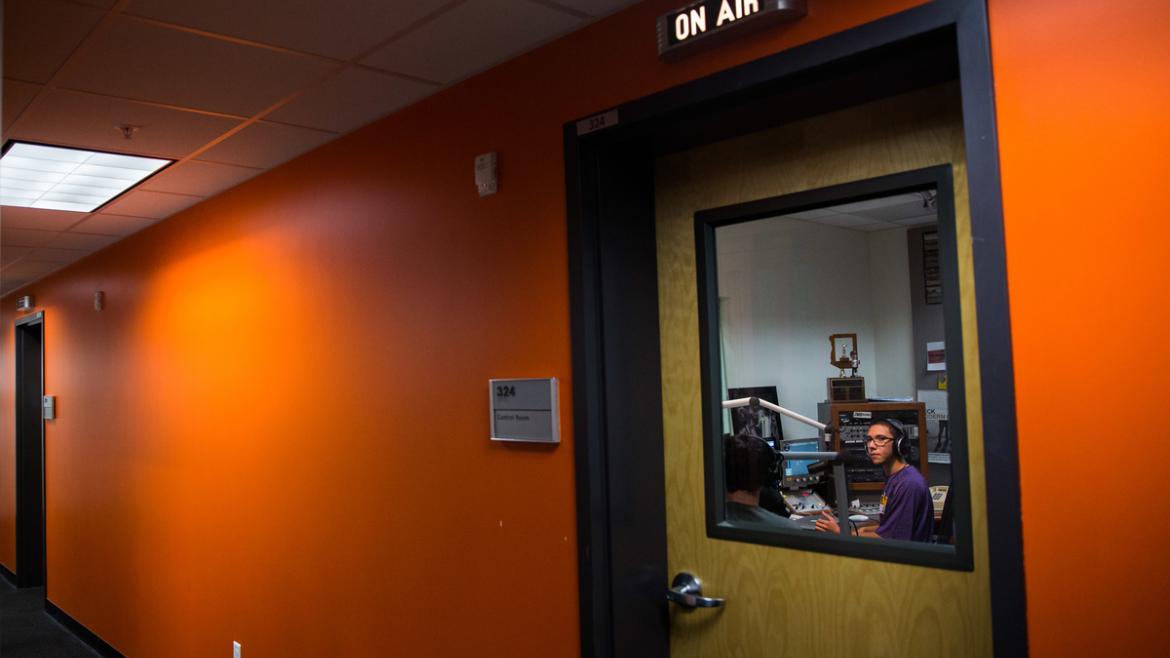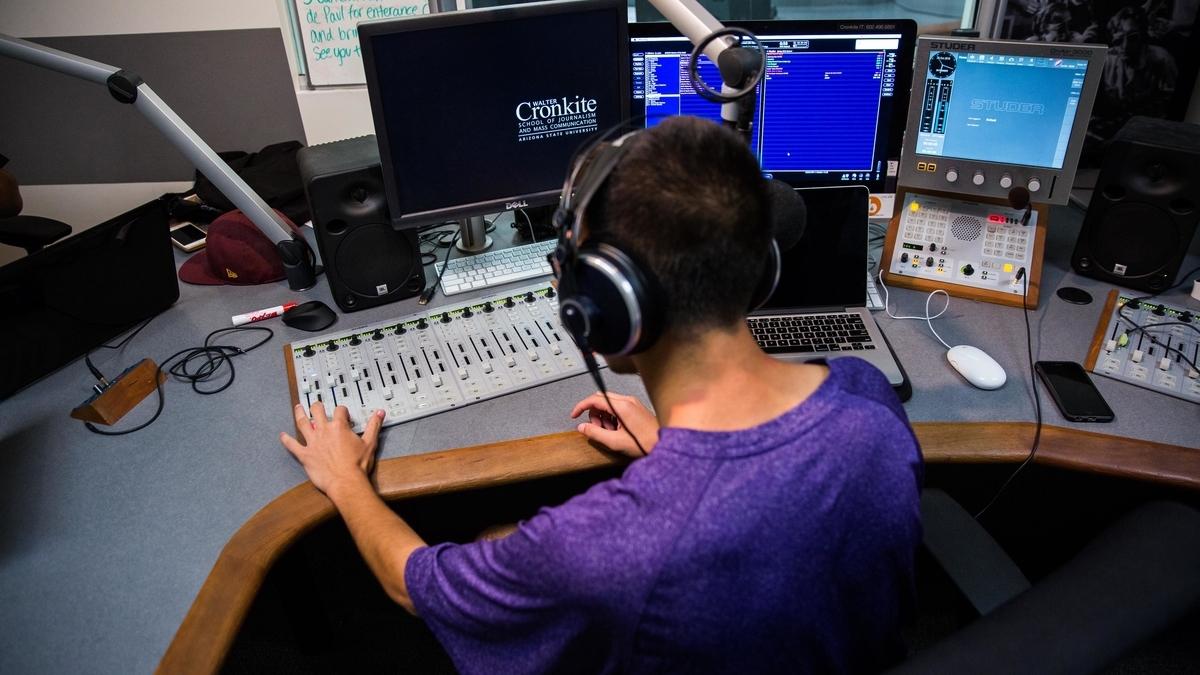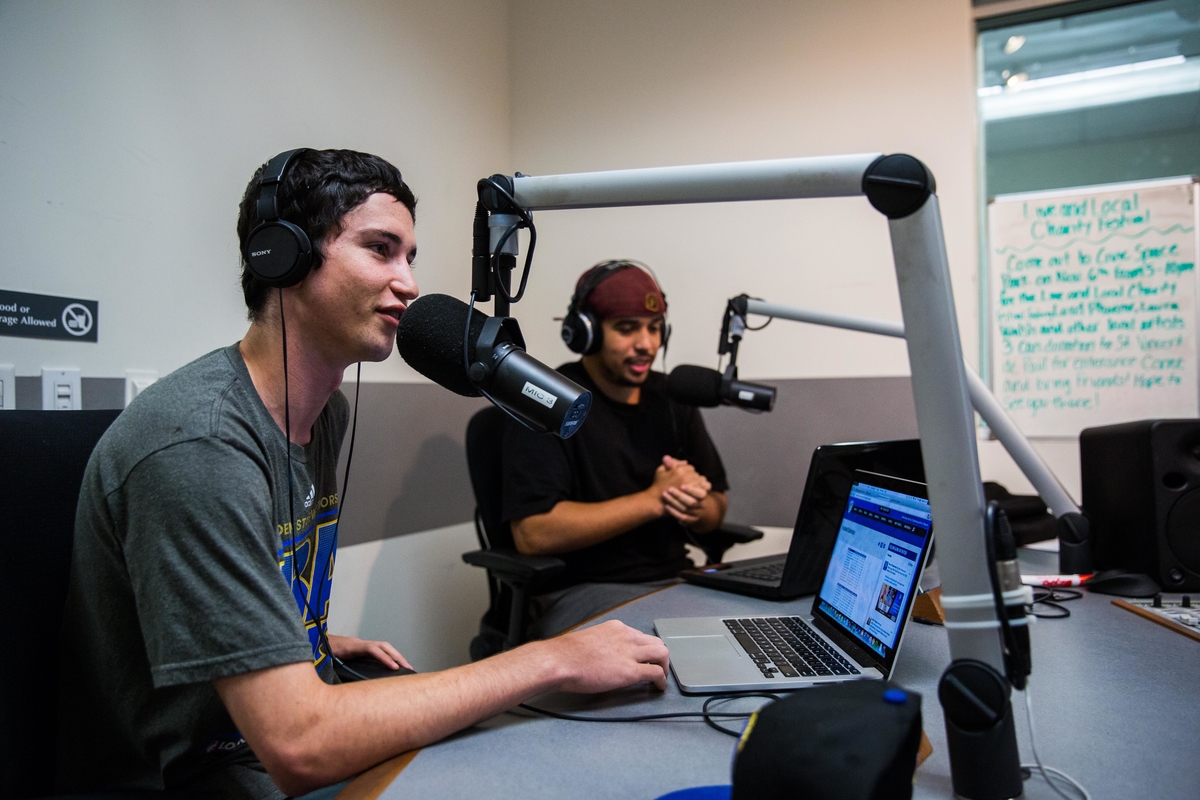Every sports journalism program in the country could be sending a thank you note to ESPN.
Since the sports TV network became a cable package staple in the '80s, millions of kids have grown up wanting to be the next Stuart Scott, Dan Patrick or Robin Roberts — reading witty lines over sports highlight packages on ESPN's flagship program, "SportsCenter."
ASU’s Walter Cronkite School of Journalism and Mass Communication has taken that rising interest in an academically rigorous direction, and today the sports journalism program is one of the fastest growing degrees at the school.
“If I wasn’t teaching it, I’d be the first in line to take the classes,” said Brett Kurland, an Emmy-winning sports producer and director of the Phoenix Sports Bureau in the Cronkite School.
“We have one of the nation’s top sports journalism programs with unique, immersive experiences that will further prepare our students to become leaders in their field.”
When the Cronkite School announced a bachelor and master’s degree in the new program last fall, 202 undergrad students declared it as their major while 14 graduate students chose to pursue a master’s degree in the discipline.
Brendan Kennealy moved from Brentwood, California, to pursue the 120-hour undergraduate program, which features classes in sports reporting, videography, photojournalism and ethics and diversity, among others.

Sports Journalism sophomore Justin Toscano and fellow students broadcast their show Bottom of the Sixth at the Blaze radio station in the Cronkite School.
Photos by Deanna Dent/ASU Now
“When I found out about the degree I said, ‘This is a career I not only want to follow but could actually earn a living doing,’” Kennealy said. “It’s something I want to do with my life.”
Like many sports journalism majors, Kennealy’s passion was ignited at a young age.
“One of my dad’s friends was Matt Vasgersian, a Major League Baseball announcer, who invited us up into the booth at Dodger Stadium when I was around 10 years old,” Kennealy said. “I watched him work up close and that made such a big impact on me.”
So did Barry Bonds, the ASU alumnus and Major League Baseball record-holder for most home runs in one season.
“He was my idol and I told my parents that I wanted to go to college where Barry Bonds went to school,” Kennealy said. “I was originally going to be a communications major, but then my mother found out that Cronkite has a world-class journalism school. So I said, ‘Um, yes, sign me up for that please.’ ”
Mark Lodato, an assistant dean who supervises the Cronkite School’s broadcast and sports curriculum, says while passion is important, so is learning the craft.
“One of the things we address early on with students is that their first responsibility is to become a journalist and it’s no longer time to root for the team,” Lodato said. “They have to remain unbiased and be true to that. Most of our students understand that quickly and are able to adapt but it’s certainly a mindset they need to embrace.”
Lodato added that Phoenix is a great place to learn the sports journalism trade as one of 12 cities in the United States with “The Big Four” major league sports teams — football, baseball, basketball and hockey. He said the university was keen to respond to the marketplace, but students are driving the demand.
Sports journalism majors Brendan Kennealy and Raymond Gurley talk about ASU football during the broadcast of their show Bottom of the Sixth at the Blaze radio station in the Walter Cronkite School of Journalism in downtown Phoenix on Oct. 28, 2015. Deanna Dent/ASU Now
Students get to cover sports on every level of competition — high school, college and the pros. The Cronkite School’s media partners include MLB.com, the PAC-12 Network, The Arizona Republic, FOX Sports Arizona, and FOX Sports West for the school’s second sports bureau located in Santa Monica at the ASU California Center.
Earlier this year students produced Super Bowl XLIX multimedia content for Sports Illustrated, NFL.com, FOX Sports Arizona and The Arizona Republic. They also will cover upcoming special events such as the MLB’s Cactus League spring training, the NCAA mens basketball tournament, the Phoenix Open and the upcoming 2016 College Football Playoff National Championship held at the University of Phoenix Stadium.
“These students are asking, ‘Wow, I can find sports in so many different directions. Is there a role for me, too?’ And the answer is yes,” Lodato said. “We can help give them the skills and take their careers within sports in many different directions.
“Being able to have those events in our backyard, it turns into a great learning experience for our students.”
While the sports journalism field is predominantly male, women are catching up. According to Lodato, more than half of the master’s program — a 36-credit-hour program featuring advanced courses — are attended by females.
“I really couldn’t see myself doing anything else but reporting sports,” said Annaliese Leon, a junior at the Cronkite School. “Almost all of my other stories I turned in were sports related, so it made sense to switch majors from broadcast to sports journalism.”
A lifelong Los Angeles Lakers and Dodgers fan from Orange County, California, Leon followed the two teams on ESPN and was heavily influenced by reporter Michele Tafoya.
“I loved the type of questions she asked because you could tell she was informed,” Leon said. “To this day I still watch her.”
She’s also keeping a watchful eye on Alanna Rizzo, a sports reporter for the Dodgers broadcast team on Time Warner Cable’s SportsNet.
“That’s my dream job because she gets to do pre-game, post-game, on field interviews and travels with the team,” Leon said. “Covering Major League Baseball is considered stressful because they have 162 games a year … but I’d be in heaven.”
More Law, journalism and politics
Can elections results be counted quickly yet reliably?
Election results that are released as quickly as the public demands but are reliable enough to earn wide acceptance may not always be possible.At least that's what a bipartisan panel of elections…
Spring break trip to Hawaiʻi provides insight into Indigenous law
A group of Arizona State University law students spent a week in Hawaiʻi for spring break. And while they did take in some of the sites, sounds and tastes of the tropical destination, the trip…

LA journalists and officials gather to connect and salute fire coverage
Recognition of Los Angeles-area media coverage of the region’s January wildfires was the primary message as hundreds gathered at ASU California Center Broadway for an annual convening of journalists…



